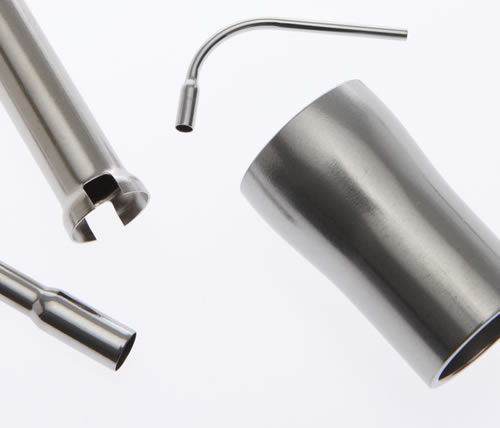Small Diameter Stainless Steel Tubing Fabricator
Precision End Forming - Small Tube Flaring and Expanding
Tube Flaring
Tube flaring and tube flanging are completed with very similar processes but typically serve different purposes.
Both forms are produced by forcing a die into the open end of a tube. Depending on the material, the amount of flaring or flanging is limited by the wall thickness. The typical increase in outside diameter is 30-40%, but other results can be achieved with special requests. Different materials will react differently during the forming process as well.
Tube flaring can be completed with automation for higher volumes. This allows for a much less expensive part price and quicker turnaround times.



Manual processes are recommended for lower volumes or parts that require multiple flaring processes.
Tube Expanding
Expanding is a method used to increase the diameter of a tube over a specified length. Similarly to flaring, a tube can generally be expanded up to 40%, but certain materials can be worked and formed farther.
The amount of expansion is related to the thickness of the tube and the wall diameter. Some thinning of the wall should be expected after the expansion process. The inner diameter of the expanded tube can be held as tight as +/- .002”. Special requests for OD and ID tolerances can be accommodated.
Think flaring, flanging or expanding might be the solution for your project? Please call us today, email [email protected] or submit an attachment on our Request A Quote form to discuss your project with a Sales team member.



